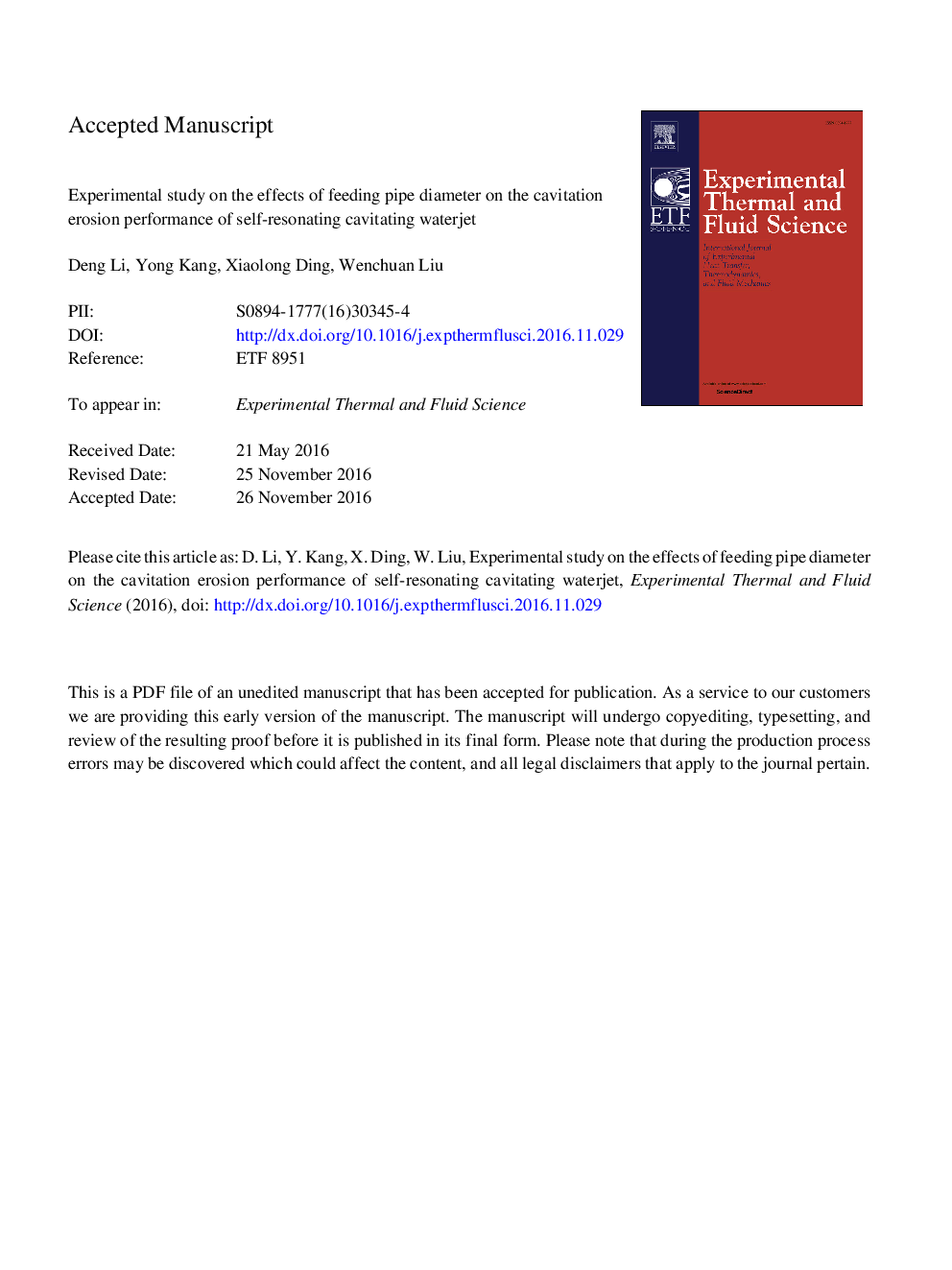| کد مقاله | کد نشریه | سال انتشار | مقاله انگلیسی | نسخه تمام متن |
|---|---|---|---|---|
| 4992773 | 1457394 | 2017 | 23 صفحه PDF | دانلود رایگان |
عنوان انگلیسی مقاله ISI
Experimental study on the effects of feeding pipe diameter on the cavitation erosion performance of self-resonating cavitating waterjet
ترجمه فارسی عنوان
بررسی تجربی بر اثرات تغذیه قطر لوله بر عملکرد فرسایش حفره ای از آب جت خنک کننده خودکفایی
دانلود مقاله + سفارش ترجمه
دانلود مقاله ISI انگلیسی
رایگان برای ایرانیان
موضوعات مرتبط
مهندسی و علوم پایه
مهندسی شیمی
جریان سیال و فرایندهای انتقال
چکیده انگلیسی
Self-resonating cavitating waterjet (SRCW) combines the advantages of pulsed waterjets and cavitating waterjets, and is thus much superior to a plain waterjet in many applications. In order to further improve the erosion performance of SRCW, the effects of feeding pipe diameter were studied as a pioneering effort. A preliminarily theoretical exploration of the relations between feeding pipe diameter and the cavitation capability of SRCW was performed with respect to wave propagation and damping. Organ-pipe nozzles were used to produce SRCWs under pump pressures of 10, 15, 20, and 25Â MPa. Numerous cavitation erosion tests were conducted with the use of three feeding pipes of diameters of 6, 13, and 25Â mm. Cavitation erosion intensity evaluated by mass loss and erosion area, erosion rate, and specific energy consumption were used to characterize the performance of SRCWs influenced by feeding pipe diameter. Results show that feeding pipe diameter dramatically affects the cavitation erosion performance of SRCWs, especially at high pump pressures. By comparing with conventional cavitating waterjets issuing from a conical nozzle, it is expected that feeding pipe diameter mainly influences the hydroacoustic waves and the self-resonance, which are the basis for generating SRCWs. Moreover, feeding pipe of diameter of 13Â mm is always the one for achieving the best cavitation erosion performance of SRCWs under the experimental conditions. Feeding pipe with a diameter of 6Â mm is better than that with a diameter of 25Â mm in improving the cavitation erosion intensity and rate only under pump pressures of 10 and 15Â MPa. And at pump pressures of 20 and 25Â MPa, the roles of these two pipes are reversed. Although such an approach is empirical and qualitative in nature, this procedure generates information of value in guiding future theoretical and experimental work on exploring the relationships between feeding pipe and the self-resonating nozzle.
ناشر
Database: Elsevier - ScienceDirect (ساینس دایرکت)
Journal: Experimental Thermal and Fluid Science - Volume 82, April 2017, Pages 314-325
Journal: Experimental Thermal and Fluid Science - Volume 82, April 2017, Pages 314-325
نویسندگان
Deng Li, Yong Kang, Xiaolong Ding, Wenchuan Liu,
